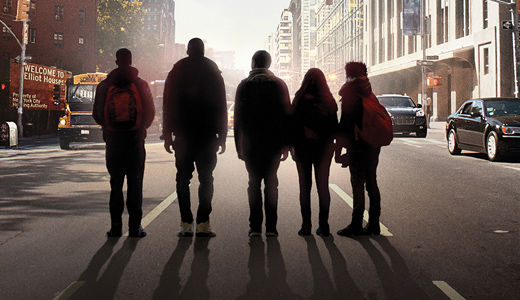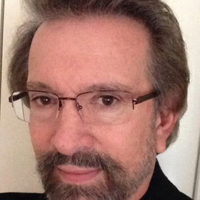
As told in Nancy Isenberg’s book White Trash: The 400-Year Untold History of Class in America, some of our founding fathers believed poor people were subhuman. Today, as reflected in the new documentary film Class Divide, the timeless system of pitting “us” against the “others” is displayed in the story of gentrification of New York City’s West Chelsea neighborhood.
(A homemade bomb exploded September 17 in a trash bin just a few blocks from the places Class Divide talks about, injuring 29 people. While we do not yet know the motive of the bomber, we do know that Chelsea is regarded as an East Coast focal point of the anger and frustration surrounding gentrification.) The story of the High Line takes us through this phenomenon.
The High Line
Even before the 2014 completion of the High Line park in Chelsea – extending along the Hudson River 1.45 miles from Gansevoort St. (near 12th St.) all the way north to 34th Street – it had already entered the ranks of the Top Ten attractions in the Big Apple.
The elevated park was constructed atop a long abandoned rail track that once enabled goods unloaded from docks on the river to quickly enter the warehouses and factories of this busy, hardworking neighborhood of New York. For years, the tracks were considered an eyesore and impediment to real estate development on the West Side. Who would build or live alongside such a rusty, weed-infested pile of debris?
Yet in an example of successful neighborhood activism, a coalition gradually emerged to oppose the developers’ plans and re-imagine a new use for the line, a lively public space that would lift people up and off the grimy streets into a clean, green fantasyland winding above and through the urban landscape.
And in a corollary example of unintended consequences, the inviting redesign and popularity of the High Line have contributed to making Chelsea the prime location for a New York City real estate boom. It breeds famous-architect commercial and residential buildings featuring $15 million apartments.
As in many other metropolitan areas in our new Gilded Age, the rich have tired of the suburbs and the commuting, repossessed the center – pushing the working poor out – and are enjoying all that a great city has to offer. The world-renowned Whitney Museum of American Art recently moved to 99 Gansevoort St., right at the southern end of the High Line, in what was known as the old Meatpacking District.
Up to 40 percent of the new super-luxury condos are purchased by foreign buyers for investment purposes – and to park their money outside their countries. No one lives there. Whole buildings are called “Zombies,” because they are largely uninhabited.
Veteran TV and film director Marc Levin focuses on a representative clash between the old and new Chelsea. Right across the street from the vast Elliot Houses, a city-owned public housing project where family income averages an annual $21K, stands an old factory that once served as a turkey slaughterhouse and has now been converted into a private school with $45K tuition.
The poor door
Although parents and other community people appear, the expertly crafted film offers penetrating portraits of the youth on both sides of the divide, and their sharply contrasting environments. We meet a cast of poor kids doing their best to fight an always rising tide. We learn their aspirations in life, and the impediments blocking them; we go to their public schools; we hang out in their homes, particularly in one with an undocumented dad away 12 hours a day at work, and subject to the vagaries of bosses and the INS. The 8-year-old Rosa is a real star in the making with her infectious verve, creativity and ambition.
And we are introduced to the children of privilege, who slowly begin understanding the entitlement wealth has bestowed on them.
Wealthy kids are being prepared for global leadership through bilingual education through the 4th grade. They learn global languages, such as Mandarin, through the most up-to-date teaching methods, and often end up teaching each other.
A central point the film brings out is that despite the national myths we like to believe, there is in fact far less opportunity in the U.S. for upward social mobility than in many countries. Those born poor, with cofactors involving housing, schools, environment, health, policing, crime, etc., will most likely remain poor and stuck in low-level, dead-end jobs. Except that now they also have to fight off racist “urban renewal.”
One of the African American young men interviewed in the film pointedly says that the divide is not about racism as such – because he sees Latino families in similar straits as his own – but rather classism. It’s about “what you have.” Both forces are obviously at work and frequently overlap. We see among these youngsters an emerging class consciousness that gets expressed in scenes of demonstrations against landlords raising rents sky-high or renovating apartments to house not the longtime tenants but the new gentry.
New York City has lost 40 percent of its low-income housing over the last decade. One demand activists have been able to win is that developers theoretically provide 20 percent of their units for low-income housing. At the same time the city loses because it is forced to offer tax breaks to such builders. In a Dickensian twist, those tenants, too, must access their floors via “the poor door” on the side street.
115 steps
In recent years a student-generated project called “115 Steps,” denoting the actual distance between the housing project and the school, has brought some of the private school students into conversation with neighbors. Against the background of news of the tragic sudden death of Luc, a student whom we had seen interviewed about his life among America’s elite, there is some movement toward comprehending the wealth gap and its powerful, far-reaching consequences.
This is a positive development: A constant throughout recorded human history is that we are all social beings, motivated to be accepted.
But is the filmmaker – himself a longtime Chelsea resident – somewhat naïve if he suggests that the way to mitigate the worst elements of the class divide is by having the two sides interact, the privileged kids meeting with the disadvantaged kids from the projects, maybe doing art or photography together?
Not every documentary needs to hammer viewers over the head with its prescriptive solutions, but these viewers would like to ask: How did wealth get so concentrated in this country, that leads to the gentrification of Manhattan, Brooklyn, the Bay Area, and parts of almost every major city? Might it conceivably have something to do with the obscene differential between compensation for the hedge-fund class and the average worker? And with the steep decline in taxes that the rich pay? With the widely available instruments available to the rich to mask income and hide profits in offshore banks? Taxes used to pay for public housing and decent public schools. Do we even remember such a time?
A trailer for Class Divide can be seen here. Interviews and a podcast with High Line co-founder Joshua David can be seen here.
Class Divide premieres October 3rd on HBO, and will also be shown at film festivals and local theaters.










Comments